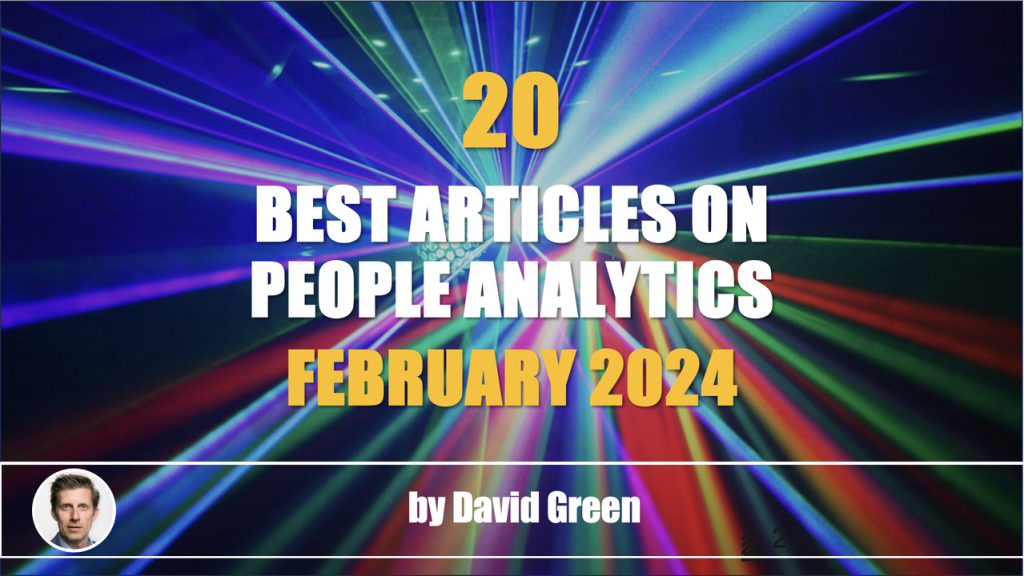
I’m writing the introduction to this month’s compendium in New York, ahead of two events this week in the Big Apple.
Firstly, I’m attending Gloat Live (thank you Ruslan Tovbulatov and the Gloat team), where I’ll be hosting a panel of three chief people officers – Michael Fraccaro Tanuj Kapilashrami and Tamla Oates-Forney– as well as sharing Insight222 research on building a data driven culture in HR. Also taking place this week is the Winter Peer Meeting for North American member companies of the Insight222 People Analytics Program, which is being hosted by Sally Masseyand Courtney McMahon at Colgate-Palmolive’s headquarters on Park Avenue.
After a weekend back in the UK for my birthday, I’ll be heading back to the US for the Wharton People AnalyticsConference on March 14 and 15. If you’re going to Gloat Live or Wharton PAC, then please do come and say hello. I was also in Switzerland a few days ago for People Analytics WorldZürich (thanks to Barry Swales Ralf Buechsenschuss), and just a fortnight ago, Rob Etheridgeand his team kindly hosted the European Peer Meeting of the Insight222People Analytics Program at HSBC’s headquarters in London – you can read some of takeaways from London here. It’s certainly a busy period of travel - and lots of vapour trail!

Some of you have written to me to advise that you weren't able to join the recent Insight222 webinar on Turning Insight into Impact with People Analytics. You can find out more by scolling down to the Video of the Month below or access the recording by clicking on the image below.

Before we get to this month’s collection of resources, I’d like to highlight once again the wonderful resource created by Richard Rosenowand the One Model team of open roles in people analytics and HR technology, which now numbers close to 500 roles.
Enjoy reading the collection of resources for February and, if you do, please share some data driven HR love with your colleagues and networks. Thanks to the many of you who liked, shared and/or commented on January’s compendium (including those in the Comments below).
If you enjoy a weekly dose of curated learning (and the Digital HR Leaders podcast), the Insight222 newsletter: Digital HR Leaders newsletter is published every Tuesday – subscribe here.
DELOITTE – 2024 Global Human Capital Trends: Thriving beyond boundaries – Human performance in a boundaryless world
The opening words of Deloitte’s 2024 Global Human Capital Trends perfectly capture the opportunity and challenge for HR today: “We’re operating in a world where work is no longer defined by jobs, the workplace is no longer a specific place, many workers are no longer traditional employees, and human resources is no longer a siloed function.” The seven trends covered in the report, each with its own chapter, are: (1) Embracing human sustainability, (2) Moving beyond productivity to measure human performance, (3) Balancing privacy with transparency to build trust, (4) Overcoming the imagination deficit, (5) Creating digital playgrounds to explore, experiment and play, (6) Cultivating workplace microcultures, and (7) Making the shift to a boundaryless HR. The report, which has 122 pages, is packed full of thought-provoking insights, visualisations and data – including FIG 1 and FIG 2 below. Kudos to the authors: Susan Cantrell Corrie Commisso Julie Duda Kraig Eaton Jason Flynn John Forsythe Michael Griffiths John Guziak Lauren Kirby David Mallon Mari Marcotte Shannon Poynton Nicole Scoble-Williams GAICD Yves Van Durme and Matteo Zanza.
We’re operating in a world where work is no longer defined by jobs, the workplace is no longer a specific place, many workers are no longer traditional employees, and human resources is no longer a siloed function.

FIG 1: In the era of human performance, business and human outcomes are mutually reinforcing (Source: Deloitte 2024 Global Human Capital Trends)

FIG 2: Source: Deloitte 2024 Global Human Capital Trends
ERNEST NG - What are the most Important things HR will need to focus on in 2024? | ALLISON BAUM GATES - Six predictions for the future of health, wealth, and work in 2024 | LYNDA GRATTON - Predictions for the Workplace of 2025, Revisited
Continuing with the prediction vibe, here are two more thoughtful reflections on what lies ahead and one reflection, 15 years on, from Lynda Gratton on her previous predictions about the future of work. (1) Ernest Ng, PhD, now at HiredScore– who Workdayhas just announced their intent to acquire, highlights a number of predictions for the year ahead combining a focus on efficiency, incorporating AI into the way we work and supporting employees to navigate change. (2) Allison Baum Gates, General Partner at SemperVirens Venture Capital combines the future of health, wealth and work into her predictions including: “AI’s primary impact in 2024 will be accelerating a shift to skills-based organizations.” (3) Lynda Gratton reflects on her Predictions for the Workforce of 2025, which she originally made in 2010 covering what she got right, where she misjudged, and what she learned about experimenting.
It will be wise to expect the unexpected. And when it comes, be prepared to observe closely, pivot quickly, and experiment widely.
ALEX CAMP, PHIL KIRSCHNER, LAURA PINEAULT, AND PATRICK SIMON - Hybrid can be healthy for your organization—when done right
Research from McKinsey suggesting that a fully remote organisation can demonstrate a level of organisational health that rivals, if not exceeds, the performance of most traditional companies. In the article, Alexandra Camp Phil Kirschner Laura Pineault and Dr. Patrick Simon highlight six priorities for companies aspiring to sustain a flexible or highly distributed workplace in parallel with top organisational health: (1) Remove ambiguity about working practices. (2) Reset performance expectations. (3) Be transparent. (4) Be purposeful about where people work. (5) Foster trust and a sense of support. (6) Test and learn.
Fully remote organizations can demonstrate a level of health that rivals, if not exceeds, the performance of most traditional companies.

FIG 3: Six priorities to sustain a flexible or highly distributed workplace (Source: McKinsey)
KELLY JONES - Unlocking the Power of Hybrid Work: 5 Guiding Principles from Cisco's 3-Year Study Article | White Paper | Executive Summary
Kelly Jones, Cisco's Chief People Officer, unveils the findings of a three year Future of Work study by Cisco’s People Intelligence Team, which was designed to explore the employee experience prior to the global pandemic, through the pandemic, to office re-opening and beyond. Kelly's article summarises five guiding principles for hybrid work including reimagining the office to create meaningful moments and encouraging leaders to be intentional with their attention. The executive summary also outlines five key findings and recommendations (see FIG 4): (1) People may be choosing to work from home, but in person touchpoints are still essential. (2) Effective collaboration is a balancing act. (3) Flexibility and choice positively influence engagement. (4) Leaders might be struggling the most. (5) Leader attention is the #1 predictor of engagement. Thanks to Roxanne Bisby Davis for highlighting.
Make the office a magnet, not a mandate

FIG 4: Source - Choice is Critical in the Future of Work (Cisco, 2024)
MICHAEL ARENA AND PHIL ARKCOLL - Enabling High-Velocity Teams
As Michael Arena and Philip Arkcoll outline, the significance of teams has never been greater, yet their effectiveness depends on being able to operate with both speed and focus. The article presents the findings of their research as to why focused teams outperform, and then provides five practices designed for teams to imbue more intentional collaboration: (1) Leverage collaboration phases. (2) Focused team structure. (3) Minimise frequent team shifts. (4) Actively manage dependencies and distractions. (5) Formation of integration teams.
With the rapid advancements in technology today, optimal team performance and speed matter disproportionately in ensuring market success.

FIG 5: Internally and externally focused agile teams (Source: Michael Arena and Philip Arkcoll)
GAD LEVANON | SHRM & THE BURNING GLASS INSTITUTE - Generative Artificial Intelligence and the Workforce
The Burning Glass Institute continues to publish fascinatingly insightful reports about the world of work. In their latest report, in collaboration with SHRM, Gad Levanon investigates how GenAI will impact industries, companies, and jobs, and reshape the economy. It reinforces that GenAI will have the greatest impact on high-skilled, professional work, provides indications of how GenAI will impact the economy (see FIG 6) and provides four actions for CHROs to: (1) Evaluate your organisation’s composition, (2) Evaluate the roles within your organisation, (3) Consider your current talent pipeline, and (4) Develop a game plan.
In the coming years, GenAI will both drive massive boosts in productivity and necessitate layoffs. Begin planning ways to leverage GenAI’s productivity benefits and prepare for the disruptions to your workforce through a combination of upskilling investments to give workers the skills to remain relevant and reskilling programs to reposition workers in areas of more stable demand.

FIG 6: Sequence of economic disruptions caused by GenAI (Source: SHRM and The Burning Glass Institute)

FIG 7: Implications of GenAI for HR functions (Source: SHRM and The Burning Glass Institute)
ANA KREACIC, AMY LASATER-WILLE, LUCIA URIBE, RAVIN JESUTHASAN, JOHN ROMEO, AND SIMON LUONG - How Generative AI Is Changing The Future Of Work | TED LIU, CARINA DENG, AND KELLY MONAHAN - How Generative AI Adds Value to the Future of Work
Two studies analysing the impact of GenAI on the world of work. The first by Ana Kreacic Amy Lasater-Wille Lucia Uribe Ravin Jesuthasan, CFA, FRSA John Romeo and Simon Luong for the Oliver Wyman Forum finds that GenAI could add up to $20 trillion to global GDP by 2030 and save 300 billion work hours a year. It also finds that while 96% of employees believe AI can help them in their current job, 60% are afraid it will eventually automate them out of work. There are numerous other insights and visualisations in the 100 page report including a projection of the likely productivity gains at work from GenAI in the next decade (see FIG 8). The second study, by Ted Liu Carina Deng and Kelly Monahan, Ph.D.for the UpworkResearch Institute, provides a comprehensive analysis of the initial impact of GenAI on the Upwork marketplace for independent talent. It finds that the impacts may already being felt with reductions in demand for work such as writing and translation and a surge in demand for skills associated with GenAI such as data science and analytics.
Generative AI could add up to $20 trillion to global GDP by 2030 and save 300 billion work hours a year.

FIG 8: Phases of generative AI’s impact on productivity at work (Source: Oliver Wyman Forum)
GEORGE WESTERMAN, SAM RANSBOTHAM, AND CHIARA FARRONATO - Find the AI Approach That Fits the Problem You’re Trying to Solve | TOMAS CHAMORRO-PREMUZIC - 7 Strategies to Get Your Employees On Board with GenAI | ANDY BALDWIN - 3 Ways to Embed DEI Into Your Company’s AI Strategy | MARTHA CURIONI – Why is Explainable AI Important for HR? | BRETT DYKES - Why AI Isn’t Going To Solve All Your Data Culture Problems
There may be a far degree of hype around GenAI, but it does seem to be accelerating the engagement of HR leaders and professionals with AI, and is also leading to an increasing number of thoughtful studies and articles on AI, including these five resources: (1) George Westerman Sam Ransbotham and Chiara Farronatooutline four categories of advanced analytics – GenAI, traditional deep learning, econometrics, and rule-based automation, and offer five questions to ask about AI’s constraints including: What is the cost of being wrong? (2) As Dr Tomas Chamorro-Premuzic observes: “the human factor — people and culture — will drive the adoption of AI, or lack thereof.” Tomas then presents seven strategies to get employees on board including i) focusing on the problem that GenAI can solve, and ii) being proactive about ethical concerns. (3) In his article for Harvard Business Review, Andy Baldwin outlines three ways to incorporate DEI into AI strategy through: i) embedding DEI into the design of your AI systems; ii) incorporating DEI into any AI-related upskilling programs; and iii) using AI as an opportunity to boost DEI. (4) Martha Curioni defines explainable AI and explains why it is critical to HR so it can provide transparency, build trust, mitigate bias and enable data driven decision making. (5) Finally, Brent Dykes cautions that while a recent study found that GenAI had catalysed a dramatic rise in the number of companies that reported they had ‘created a data-driven organization’ (from 23.9 percent in 2023 to 48.1 percent in 2024), AI is not a silver bullet for data culture. He illustrates this (see FIG 9) by referencing a study a European bank did to assess its own data culture, before highlighting two proven ways to build a data culture: executive sponsorship and role-modelling, and talent.
As with any aspect of digital transformation, the effective deployment of generative AI will depend less on technological capability than on human adaptability

FIG 9: Source: Brent Dykes, Analytics Hero

MARIËLLE SONNENBERG, FEDERICO BECHINI, SIETSE SCHRÖDER, AND CAITLIN VAN MIL - Our Real-Life Journey with GenAI in Skills and Talent Management (with code!!) | ADAM MCKINNON – Introducing Lex – Australian Employment Law Support AI | ALEC LEVENSON - A killer app with huge upsides and dangerous downsides: Applying AI to People Analytics
Two examples of GenAI in People Analytics in practice – and an article by Alec Levenson on AI in people analytics. (1) the Wolters Kluwer talent analytics team of Mariëlle Sonnenberg, PhD Federico Bechini Sietse Schröder and Caitlin van Mil share a case study of using GenAI to provide the foundation of their work to transition to a skills-based organisation. The article shares learnings from their journey (and the code!) including tips around data security, prompts, and system testing. (2) Adam McKinnon, PhD. presents Lex – an AI chatbot that has been trained on Australian workplace legislation. As Adam explains, Lex has been trained not to make up answers, and it should refuse to answer any question that cannot be answered using the legal documents it has been trained on. (3) Alec Levenson addresses the potential upsides and risks of applying AI to PA before providing a roadmap for ethical and effective application.
A human- and science-based perspective on any People Analytics model’s predictions is always needed, whether AI is applied or not.
PIETRO MAZZOLENI - Unlocking People Data: Lessons from Transforming IBM's Data Platform to Elevate People Analytics - The Why and the What | JON LESTER - Creating the future of human resources
Pietro Mazzoleni presents the first edition of what promises to be an interesting and insightful new LinkedIn newsletter, People Data Platform, which will explore the evolution of IBM's internal people data platform and its role in fostering data democratisation and people analytics. The first instalment covers the what and the why, and also provides an overview of Workforce 360 (W360 – see FIG 10), IBM’s internal people data platform. Pietro explains that the initial focus for W360 was (1) to digitalise People Scorecard, IBM´s main talent dashboard that measures the health of the workforce, and (2) to scale IBM’s advanced AI solutions like Job Recommendation, Attrition Risk Analysis, and Compensation Advisor. I recommend reading Pietro’s article alongside the second article, featuring Jon Lester on how in an initial pilot in IBM Consulting, a digital AI assistant (HiRo) saved 12,000 hours in one quarter, and halved the quarterly promotion process from 10 to 5 weeks.

FIG 10: Benefits of Workforce 360 (Source: IBM, Pietro Mazzoleni)
WILLIS JENSEN - Why Is It So Hard to Get Finance and HR Aligned? | JACKSON ROATCH - The Behavioral Economics of Return to Office | LYDIA WU - The Problem with “I Don’t Disagree” in People Analytics | JARED VALDRON - An FAQ on Generative AI in People Analytics | ANSHUL SHEOPURI - People Operations As A Critical Differentiator For Employee Experience | JUSTIN PURL - The People Analytics Method: Why TikTok's Head of Global People Analytics prioritizes context not control
As has also been the case in recent months, February saw a number of articles from current and recent people analytics leaders. These act as a spur and inspiration to the field. Six are highlighted here. (1) Willis Jensenboils down the traditional disconnect between HR and Finance teams on headcount: “There are some fundamental differences in counting the number of people (headcount) versus counting the amount of worker productivity (FTE) and both are necessary for different goals.” (2) Jackson Roatchanalyses the return to office topic through the lens of behavioural economics. (3) Lydia Wubreaks down why hearing “I don’t disagree” is a problem for people analytics, and in doing so highlights the importance of building trust with key stakeholders. (4) Jared Valdronprovides a set of answers to 18 frequently asked questions about GenAI in people analytics including i)) Is generative AI a good co-pilot for programming? ii) How will generative AI change the People Analytics job market? (5) Anshul Sheopurihighlights five areas where providing a frictionless experience is key to a successful EX program including i) Design with the user in mind and build for scale, and ii) Trusted data enables a solid foundation and responsible AI delivers personalised experiences. (6) Justin Purl Head of Global People Analytics of TikTok, introduces The People Analytics Method (see FIG 11) as a scientific approach for accumulating context that delivers impactful insights and supports HR decision-making
While it can be challenging to measure the financial impact of HR projects, that shouldn’t stop HR from trying to build those business cases.

FIG 11: The People Analytics Method (Source: Justin Purl)
Two key parts of The People Analytics Method are understanding context and engaging employees.
J. PUCKETT, VINCIANE BEAUCHENE, PATRICK ERKER, AND ZHDAN SHAKIROV – Is Your Upskilling Program Paying Off
Measuring the Return on Learning Investment is arguably the Holy Grail of upskilling programs, but according to this article by BCG it is in fact possible. In their article, J. Puckett Vinciane Beauchene C. Patrick G. E. and Ƶhdan Shakirovpresent a three-step approach: (1) Identify the desired business impact upfront. (2) Define the metrics for holding the program accountable to that impact and measuring progress. (3) Determine whether the targeted impact has been achieved.
Before embarking on any upskilling program, organizations first need to establish the business impact they will measure after the program is over.

FIG 12: Metrics for assessing the impact of learning programs (Source: BCG)
DAVE ULRICH AND HARRISON JAMES - How to Ensure that Human Capability Investments Deliver Stakeholder Value
As Dave Ulrich and Harrison James explain in their article, organisations typically rely on benchmarking and best practices to evaluate the return from human capital investments. They argue that these methods are often limited and do not provide the specific guidance to impact the business results of individual companies. Their article sets out an alternative: an Organization Guidance System (OGS), which begins by identifying the stakeholder outcomes relevant in your company as a precursor to then determining through providing an opportunity score (see FIG 13) for which human capability initiatives best deliver those outcomes.

FIG 13: Source: Dave Ulrich, The RBL Group
MARC EFFRON - Is the Juice Worth the Squeeze? Questions About Becoming a Skills-based Organization
As Marc Effron of The Talent Strategy Group highlights in his remarkable must-read article, there have been many claims made by consulting firms and technology providers about the case for shifting to being a skills-based organisation. In the article, Marc examines these claims, asking and answering 17 questions about skills-based organisations. The questions include: (1) If a skills-based approach is needed, why is it needed? (2) What changes will my organisation have to make to become a skill-based organisation? (3) Is there any proof that a skills-based approach delivers results? (4) Will AI and technology solutions better enable companies to track, manage and match skills? (5) How predictively accurate are skills in determining performance? Whatever side of the skills-based organisation debate you are on, I highly recommend reading Marc’s article.
At best, shifting to a skills-based environment can help some people in some situations at a large cost. It is likely best suited to industries where there is financial largess including pharmaceutical, banking, and larger consumer products firms. At worst, it reflects HR’s continued pursuit of novelty with the giddy support of technology and consulting firms that are all-too willing to promote and enable this questionable solution.
SCOTT REIDA - Draft priority role competency needs over time using ChatGPT4 and Tableau
A practical and technical guide from Scott Reida a workforce strategist at AWS, as he demonstrates how to use ChatGPT to drive talent intelligence by identifying current and future developments for key roles within an organisation. Scott visualises the outputs from ChatGPT in Tableau over a time horizon of ten years using the example of competencies for a data scientist.

FIG 14: Source – Scott Reida (access here)
ALICE DAMONTE, DANIEL MORALES, AND SARAH TOBEY - Employee listening programs and how to keep employees talking | IT SURVEY GROUP - What’s on the Horizon? Three Trends That Will Shape Employee Listening in 2024
Alice Damonte Daniel Morales and Sarah Tobeyfrom McKinsey’s internal people analytics and measurement team share learnings from Pulse, their continuous listening program. This capability has already enabled the team to shape more than 300 different initiatives since it was established three years ago. Their article focuses on two key elements of a successful employee listening program: (1) Making it easy and meaningful for employees to participate, which is enabled by providing transparency through firm-wide readouts, community dialogues, and individualised insights with support. (2) Making it straightforward for leaders to listen and act, which the team enable through ‘care packages’ to help leaders focus their attention on what matters most. For readers that enjoy this, I also recommend the second article, which features EX/HR leaders such as Kristin Saboe, Ph.D. Caitie Jacobson Stephanie Andel, PhD Patrick Gallen, MSOD Madison Beard and Ronald Ivan Dela Cruz forecasting three key trends for employee listening in 2024.
To ensure an employee listening channel is sufficiently well stocked with timely insights, it must be easy and meaningful for employees to participate, and straightforward for leaders to listen and act.

FIG 15: Source: McKinsey

FIG 16: Three key trends shaping employee listening in 2024 (Source: IT Survey Group)
AMY C. LEWIS, ANDREA DERLER, CUTHBERT CHOW, MANDA WINLAW, AND DANI HAIG – Designing Impactful Teams: Data-backed insights about effective team size
What does team size have to do with designing high-performing teams? That was the exam question, the Visier Inc.team of Andrea Derler, Ph.D. Cuthbert Chow Manda Winlaw and Dani Haigsought to answer in a collaborative study with Amy C. Lewis, PhD Professor of Management at the College of Business at Texas A&M University-San Antonio. Key findings include: (1) Most people work in teams of six to ten. (2) Team size varies by the nature of the work. (3) Smaller teams have more high performers. (4) Smaller teams have lower resignation rates (see FIG 17). The report has some helpful insights for those studying team effectiveness and involved in organisational design work.

FIG 17: Smaller teams have lower resignation rates (Source: Visier)
SPENCER HARRISON AND KRISTIE ROGERS - Building Culture From the Middle Out
The premise of a study by Spencer Harrisonand Kristie Rogersis for a business to harness the power of culture, it needs managers and team leaders to go beyond believing that they are responsible for culture to actively building it. Their research finds that managers that successfully achieve this are able to link the ‘big-C’ culture of their organisation (e.g. the official set of values) with the ‘small-c’ culture that plays out in the narrower and vibrant daily patterns of interaction (see FIG 18). The article highlights four successful strategies: (1) Endorse big-C culture through celebration and preservation of select features. (2) Endorse big-C culture by learning from other managers. (3) Enrich small-c culture through cultural innovations. (4) Enrich small-c culture by empowering employees to innovate.

FIG 18: Endorse and Enrich Your Way to Corporate Culture (Source: Harrison and Rogers)
JOSH BERSIN - How to Actually Execute a 4-Day Workweek | DOUGLAS BROOM - Four-day work week trial in Spain leads to healthier workers, less pollution | BENJAMIN LAKER – How Far-Reaching Could the Four-Day Workweek Become? AVA MARTINEZ – A 3-Day Workweek Could Complicate The Future of Work
Four articles on the four-day week, a concept that seems to be gathering momentum with pilots suggesting that business outcomes can be maintained while employee wellbeing and retention is enhanced. (1) Josh Bersinpresents findings from his study that finds companies need to undertake substantial work redesign to reduce hours while maintaining business outcomes to make the four-day week work. (2) Writing for the World Economic Forum, Douglas Broom shares results from a four-day work week pilot in Valencia, which found that giving workers an extra day off a week actually increases productivity, boosts physical and mental health and reduces CO2 emissions. (3) Benjamin Laker, who has been studying the four-day week for a number of years, outlines the findings from a UK study on the four-day week, which finds that 92% of the 61 companies that participated in the pilot are continuing with the four-day week. Laker also highlights that research conducted before and after the trial revealed that 39% of employees experienced lower stress levels and 71% noticed less burnout while working shorter weeks (see FIG 19). (4) From being one of the CEO outliers on return to the office, JP Morgan Chase CEO Jamie Dimon suggests that AI may precipitate a future of work where the working week is three days – as reported by Ava Martinez for The HR Digest.

FIG 19: Source: The UK’s four-day week pilot (Autonomy)
SERENA HUANG - DEI Funding Cuts? You Need Data Analytics and AI More Than Ever | BOGDAN YAMKOVENKO AND STEPHEN TAVARES - To Understand Whether Your Company Is Inclusive, Map How Your Employees Interact
With many companies and institutions – particularly in the US – cutting back on their DEI programs, a recent edition of Serena H. Huang, Ph.D. From Data to Action newsletter is well timed. Serena explains how people data and analytics can help reverse this trend and highlights a number of helpful resources. One of the resources Serena highlights is a seminal article by Bogdan Yamkovenko, PhD and Stephen Tavares first published in Harvard Business Review in 2017. It provides a case study of a professional services firm that used organisational network analysis to identify that that women were largely shut out of its decision making, idea sharing, and emotional support networks (see FIG 20). For more from Serena, please tune into her recent conversation with me on the Digital HR Leaders podcast: How to Enhance Your Career in People Analytics.

FIG 20: 3 ways to look at employee networks at one professional services firm (Source: Heidrick & Struggles)

Much of the innovation in the field continues to be driven by the vendor community, and I’ve picked out a few resources from February that I recommend readers delve into:

FIG 21: Scenario modelling and external shocks (Source: Alicia Roach, eQ8)

FIG 22: AI related job postings in HR roles are on the rise (Source: Revelio Labs)

FIG 23: Complementing R&D and L&D approaches (Source: Marc Ramos)
In another month of high-quality podcasts, I’ve selected five gems for your aural pleasure: (you can also check out the latest episodes of the Digital HR Leaders Podcast – see ‘From My Desk’ below):
NAOMI VERGHESE, ALAN SUSI AND DAVID GREEN | INSIGHT222 - How Leading Companies shift People Analytics from Insight to Impact
Please forgive the mild case of self-indulgence, but the ‘Video of the Month’ is actually a webinar we recently hosted at Insight222based on our People Analytics Trends research, which was informed by a survey of 271 participating companies. In the webinar, Naomi Vergheseand I walked through the findings from the Insight222 People Analytics Trends research, unveiling the distinctive characteristics of ABCD Teams that propel organisations to new heights. Naomi and I were joined by Alan Susi, VP and Global Head of Organisational Analytics and People Insights at S&P Global. Alan shared insights on how the firm successfully elevated their approach to people analytics, turning data into tangible business outcomes. You can access the webinar here – or by clicking the image below.

JOHN WINSOR AND JIN H. PAIK – Open Talent: Leveraging the Global Workforce to Solve Your Biggest Challenges
In Open Talent, John Winsor and Jin Paik advocate that companies need to shift to a more ‘distributed’ structure that revolves around talent (people) and projects in a networked organisation. In this model, talent is assembled from both inside the organisation (via an internal talent marketplace) and outside (via external talent clouds). The authors reveal how they implemented open talent strategies, and how other companies can adopt these techniques. A thoughtful and insightful read.
SHELLEY XIN LI, FRANK NAGLE, AND ANER ZHOU - Mapping Organizational-Level Networks Using Individual-Level Connections: Evidence from Online Professional Networks
An interesting paper by Shelley Xin Li, Frank Nagle, and Aner Zhou for the Harvard Business School Strategy Unit, which constructs and describes a comprehensive network for 7,715 publicly traded U.S. firms from 2004 to 2018, using data on over 9 million people with 2 billion connections from the professional social network LinkedIn. The key finding is that while employees do not necessarily make connections for the company’s benefit, the centrality of that company in the employee network positively predicts company value. Thanks to Nicolas BEHBAHANI for highlighting.

FIG 24: Firm-level Network Centrality and Economic Performance for U.S. Public Firms in 2018 (Source: Li, Nagle, and Zhou, 2023)
February saw the final two episodes of Series 36 of the Digital HR Leaders podcast, sponsored by ScreenCloud as well as the first episode of Series 37 sponsored by Culture Amp. Thank you respectively to Luke Farrugia of ScreenCloud and Ellisa Packer and Jodie Evans of Culture Amp.


Finally, this month I’d like to thank:
We’ve recently released our fourth annual People Analytics Trends report at Insight222: Investing to Deliver Value: A new Model for People Analytics, which is now available to download via the link – or by clicking on the image below.

David Green ?? is a globally respected author, speaker, conference chair, and executive consultant on people analytics, data-driven HR and the future of work. As Managing Partner and Executive Director at Insight222, he has overall responsibility for the delivery of the Insight222 People Analytics Program, which supports the advancement of people analytics in over 90 global organisations. Prior to co-founding Insight222, David accumulated over 20 years experience in the human resources and people analytics fields, including as Global Director of People Analytics Solutions at IBM. As such, David has extensive experience in helping organisations increase value, impact and focus from the wise and ethical use of people analytics. David also hosts the Digital HR Leaders Podcast and is an instructor for Insight222's myHRfuture Academy. His book, co-authored with Jonathan Ferrar, Excellence in People Analytics: How to use Workforce Data to Create Business Value was published in the summer of 2021.
I'll be speaking about people analytics, the future of work, and data driven HR at a number of upcoming events in 2024:
More events will be added as they are confirmed.
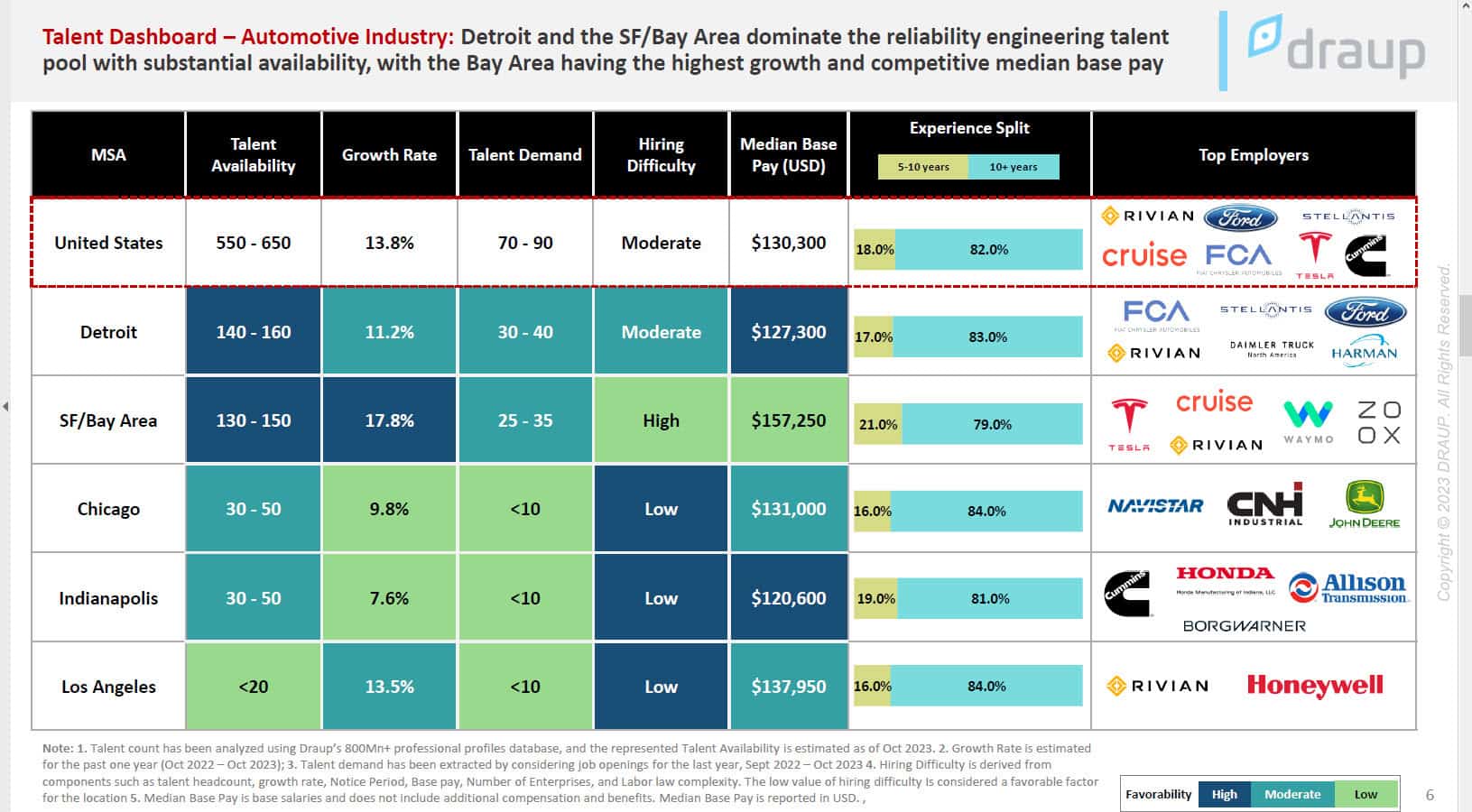
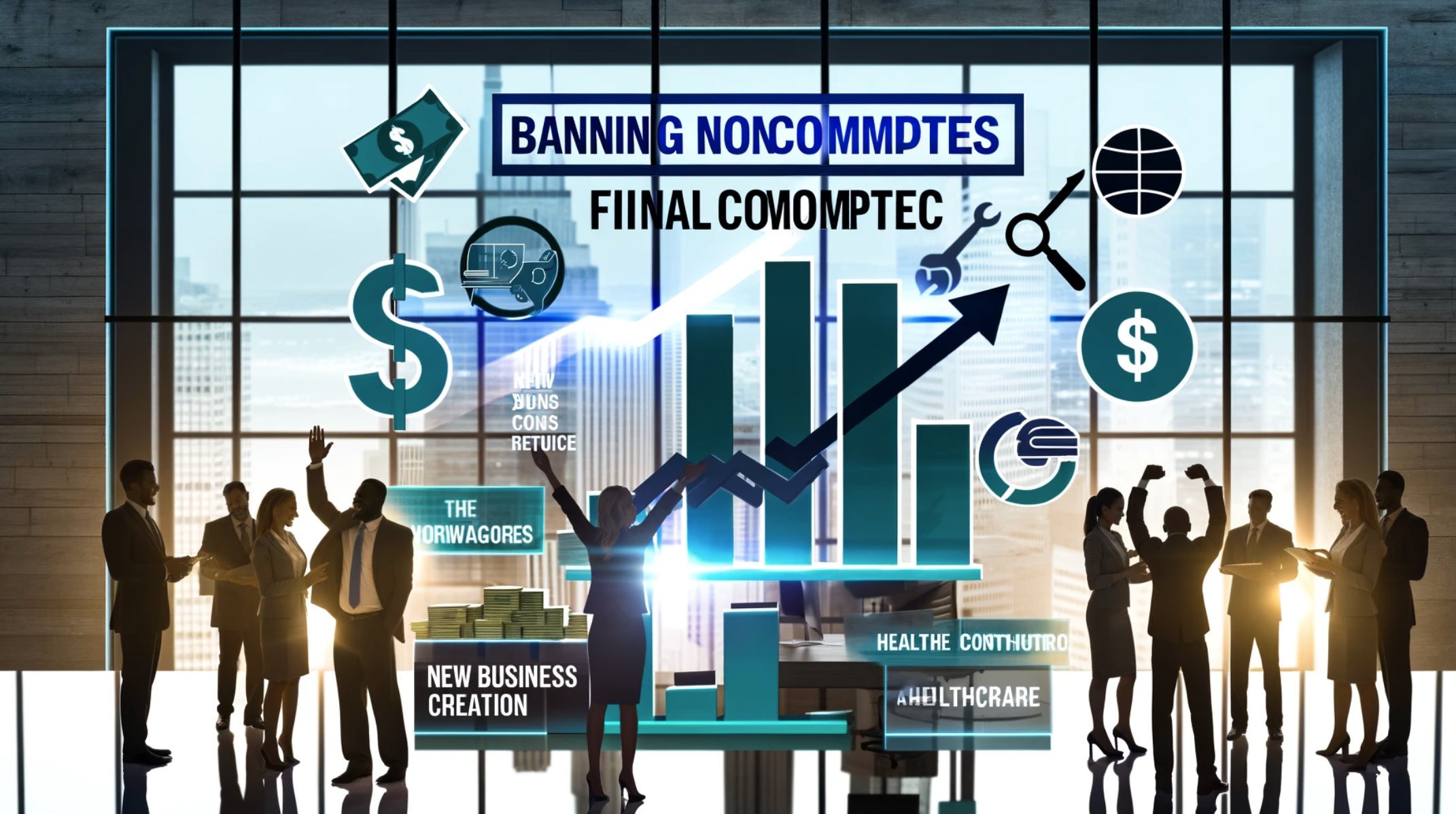
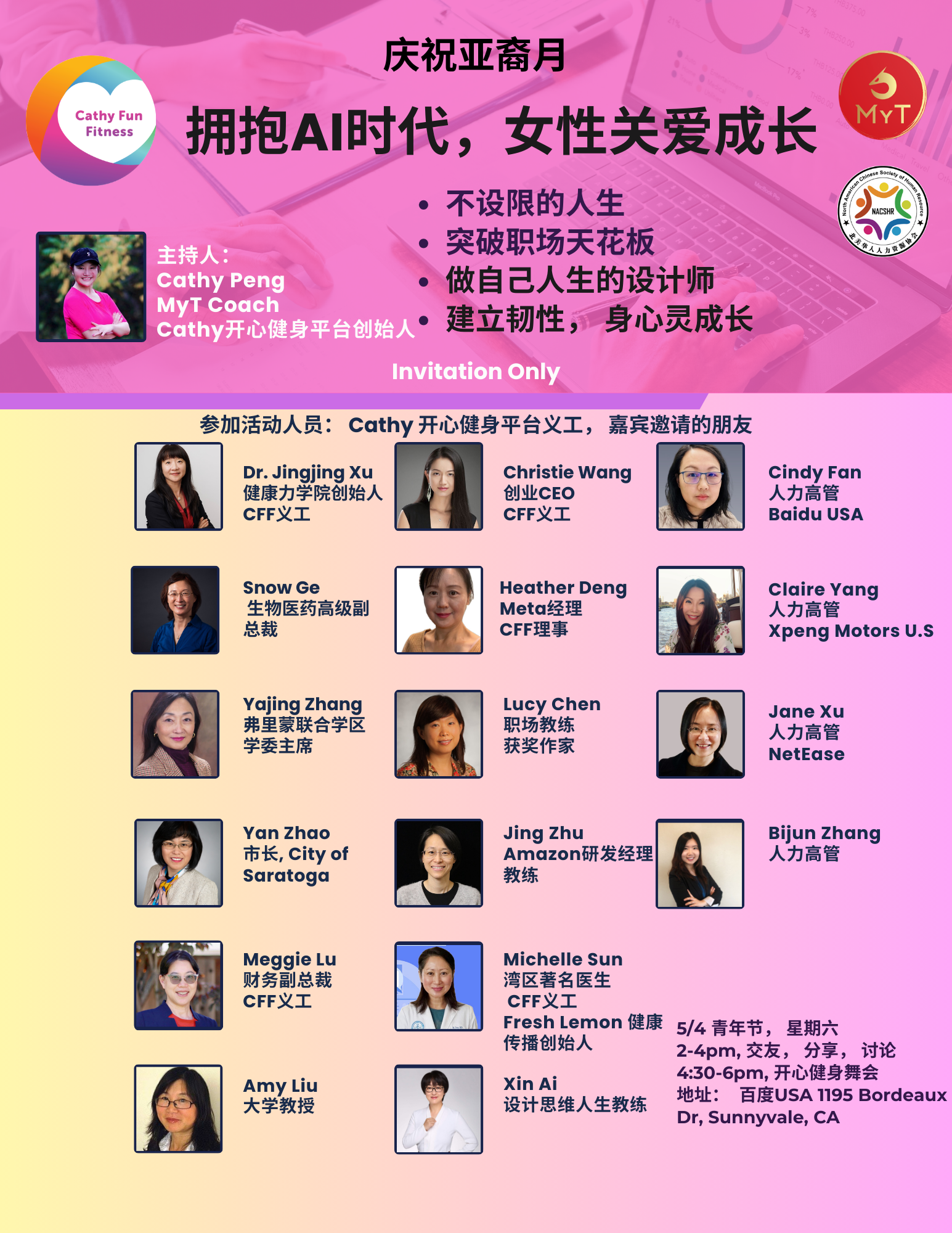
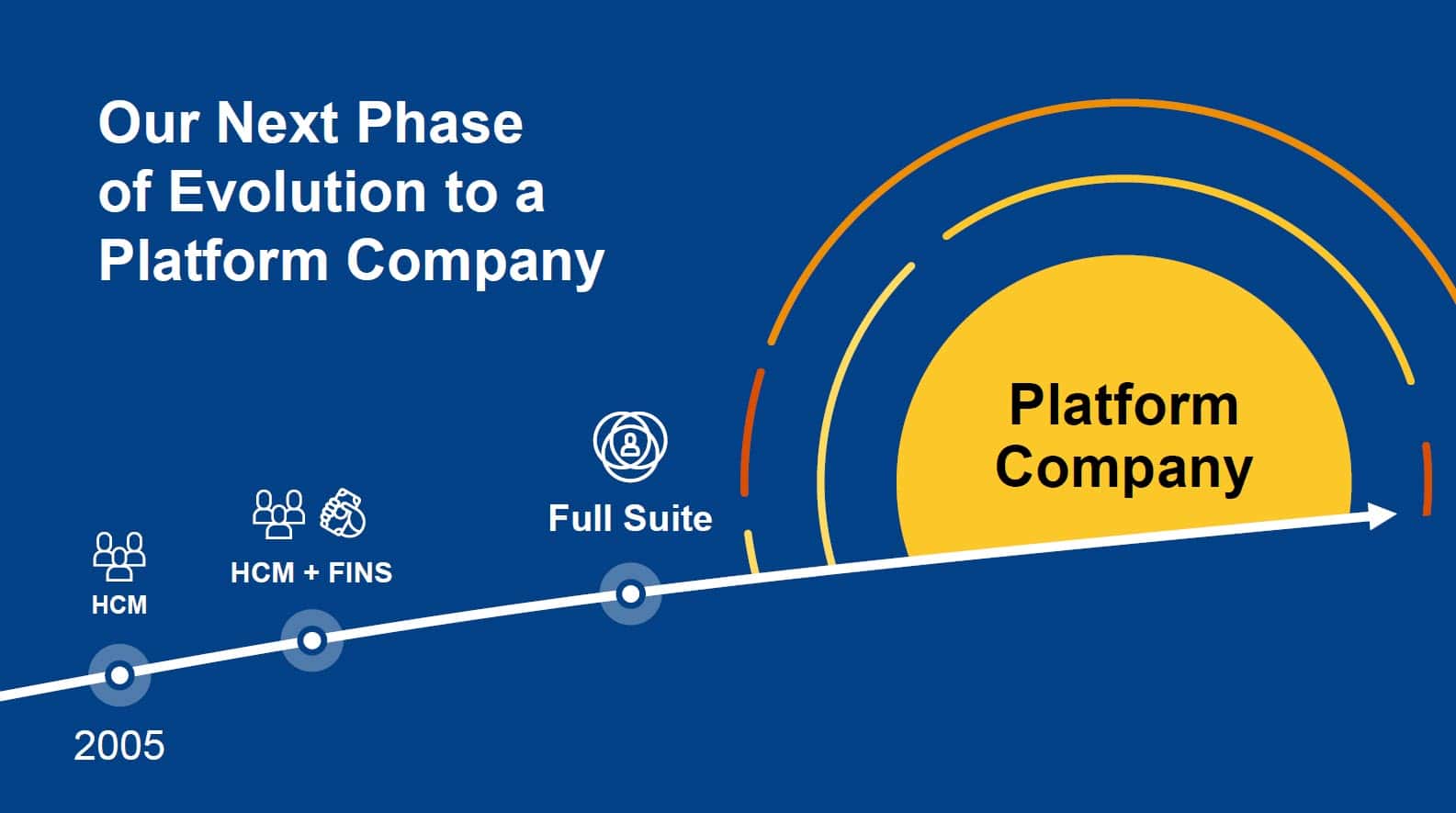

 扫一扫
添加客服
扫一扫
添加客服




